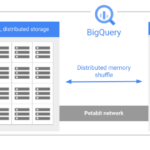Online shopping has come a long way since its early days of basic product listings and cumbersome checkout processes. Today’s ecommerce experiences are polished, personalized, and seamlessly integrated into our lives.
Behind-the-scenes, next-generation technologies are powering this change, providing retailers with actionable data insights, automation capabilities, and innovative customer engagement tactics. They will shape how we research, purchase, and receive products online.
Predictive Analytics for Smarter Purchasing
Retailers now have unprecedented access to massive amounts of data on browsing behavior, purchasing history, reviews, and product interactions.
AI and machine learning technologies, such as predictive analytics tools, can turn this data into invaluable insights that inform purchasing and marketing decisions. Applications of this technology include:
- Demand forecasting
Anticipating sales volumes and adjusting inventory levels accordingly to avoid out-of-stock situations or being left with extra inventory. Inventory forecasting software can be particularly beneficial for anticipating top-selling items.
- Dynamic pricing
Customizing prices according to competitor offerings, seasonality, inventory levels, and consumer behavior data to optimize margins and conversion rates. It is an efficient strategy that balances profit margins with conversion rates.
- Recommendation engines
By analyzing past purchases and browsing habits to provide relevant products to each customer, recommendation engines provide an individualized shopping experience.
- Marketing optimization
Determining the most suitable platforms, messaging, offers, and products to promote for each segment to maximize return on investment (ROI). Resources may then be allocated for maximum efficiency.
As predictive analytics evolve, retailers can expect purchase predictions down to the product or SKU level. Not only will this cut wasteful spending and costs, but it will also increase relevance with shoppers.
Automation Streamlines Operations
Automation is revolutionizing ecommerce operations, getting noticed by common people. Software bots can efficiently handle repetitive, high-volume tasks that harm human employees. Use cases include:
- Processing orders and payments
- Managing returns and exchanges
- Responding to common customer service inquiries
- Updating product information across channels
- Reordering and managing inventory
- Personalizing marketing content
By reducing manual busywork, retailers can reallocate their workforce to focus on more strategic initiatives and complex decision-making. Bots also mitigate overhead costs associated with staffing larger teams.
Automation also facilitates headless commerce – an architecture with the front-end website/app and back-end systems separated from each other. This makes it easier to manage omnichannel experiences optimized for every device and channel.
As machine learning capabilities progress, you can expect bots to handle increasingly complex tasks and deliver even greater operational efficiency.
Immersive Shopping via AR/VR
This is a step further from the norm. Virtual and augmented reality open new possibilities for ecommerce by simulating lifelike shopping experiences online.
Furniture and clothing retailers are already experimenting with AR apps that let customers visualize items in their living space. This reduces returns from incorrect size or style mismatches.
Beauty brands allow virtual makeup trials. And with VR headsets, every brand can provide immersive, interactive product exploration unmatched by 2D webpages.
These technologies are slowly gaining traction as VR equipment becomes mainstream and mobile AR improves. The applications will expand as the technology evolves.
Eventually, we may see VR stores where every product is “reachable” to view from all angles and read reviews. AR will seamlessly overlay product information as we shop in physical stores. For retailers, mastering product visualization and gamification tactics now can position them as leaders in the next era of digital retail.
Heightened Convenience via Internet of Things
The Internet of Things (IoT) allows everyday objects to connect to the Internet and other devices. For consumers, this brings conveniences like smart speakers ordering household items when supplies run low. But it also gives retailers greater insights into how customers interact with their products.
Sensors on packaged goods can track usage frequency, occasions, and more. Vending machines connect to inventory systems for automated reordering. Appliances diagnose technical issues and trigger replacement parts or service requests (You can see this happening in the latest cars).
All this real-world data better informs product development and marketing. Companies can tailor promotions and recommendations based on actual consumption patterns, not just past purchases. Shoppers benefit from simplified reordering, personalized offers, and self-service options.
Summary
While we can envision applications of predictive analytics, automation, AR/VR, and IoT, the future will surely bring innovations that are unimaginable today.
But one thing will remain constant – continuously advancing consumer expectations. Retailers should stay agile and evaluate each emerging technology for how it can enhance their ecommerce ecosystems and lift the overall customer experience.







